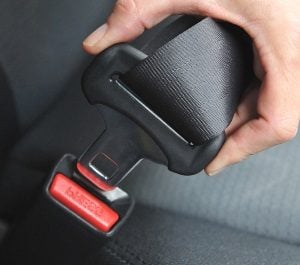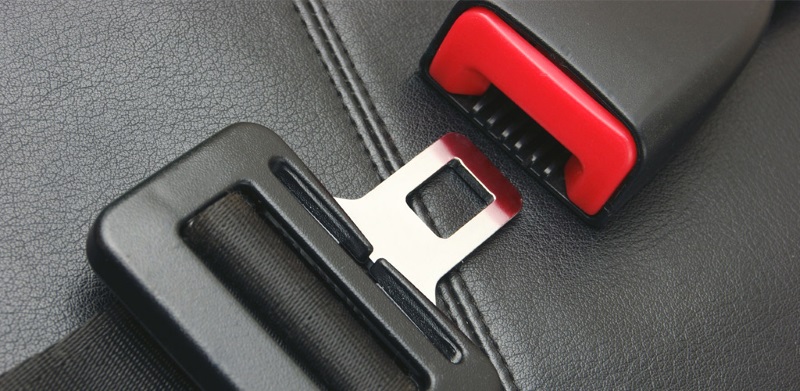How Seatbelts Actually Work in Your Average Kiwi Car

If you’re cruising down Te Rapa Road or stuck at the lights on Peachgrove Road, your seatbelt probably isn’t the first thing on your mind. But after a few years knocking around in Hamilton – dodging potholes in Rototuna, slamming on the brakes for stop-start traffic in Frankton, or just dealing with the odd speedbump down in Glenview – your seatbelt gets its fair share of action. It’s more than just a strap – modern seatbelts have got some proper clever gear inside now, like pre-tensioners that yank you back in a crash. Saved a few ribs, those things.
Most newer Mazdas, Suzukis, VW Golfs, Skoda Octavias, and all sorts of Toyota hybrids rolling in from Cambridge or Ngaruawahia have these smart seatbelts. There’s even sensors that’ll beep like mad if anyone jumps in and forgets to buckle up, which, fair warning, has saved a couple parents embarrassment after trying to sneak out without latching the belt for a quick Maccas run. Bottom line, these aren’t just frills – they keep you legal, and more importantly, breathing, if some clown rear-ends you near The Base or down SH1.
What Seatbelts Need for a WOF in Hamilton
It doesn’t matter if you’re rocking a 2008 Honda Jazz, or you’ve got a pristine Audi A4 you only take out for Raglan runs – if your seatbelt webbing’s torn or dodgy, you’ll flunk your WOF. The NZTA’s rules are clear as day: no cuts, no frays, no funny patterns, curls, or sun-faded threads. If your buckle’s rusty or the belt’s not retracting, that’s a fail too. Your seatbelt’s gotta be in good nick, or you’re walking home after your WOF Hamilton check.
Learn more about seatbelt requirements >
Stuff We See Go Wrong with Seatbelts

After a few Hamilton winters, especially if you park outside and the fog hangs around, we see seatbelts start to jam or the warning lights stick on. Sometimes it’s just a dodgy seatbelt sensor, other times the wiring’s been chewed by rodents (seen it myself in a Nissan Juke from Morrinsville). You get weird beeping, the buckle gets loose, or the belt webbing just wears out after a few too many hot, dry Tamahere summers baking the back seat.
One of our techs just sorted a rewebbing job for a woman with a sweet Peugeot 308 from Gordonton – the seatbelt was sun-faded and frayed, which wouldn’t cut it for WOF. We can organise seatbelt rewebbing to proper compliance standards if yours is looking sad. Don’t put it off – that seatbelt keeps you alive if you meet a pole near Dinsdale.
And hey – if there’s rust or any crusty corrosion where the belt bolts to the floor, that’s a straight-up fail at inspection. Keep an eye on your anchors, especially if you do a lot of Coromandel runs and your car’s seen a bit of sea air.
Airbag & Seatbelt Warning Lights: Don’t Ignore Them
If your seatbelt warning light’s stuck on, could be a sensor, could be deeper. Sometimes, it means your airbag system’s packing a sad too. We offer airbag diagnostics and repairs so we can properly sort it, whether it’s in a Subaru Outback or a late-model Kia Sportage.
Bit back, heaps of Kiwis – over 50,000 – had to get a compulsory recall thanks to dodgy Takata airbags. If you’ve got warning lights on, best check if your car’s in that lot.
Need a Seatbelt Fixed or Replaced in Hamilton?
If your WOF failed for seatbelt trouble, don’t stress. We do plenty of seatbelt replacements and get seatbelt sensors sorted, so you can get back on the road quick. Sometimes, if the hardware’s sweet and it’s just the webbing that’s cactus, we can reweb it for you and save you the hassle (and a few dollars).
We’re happy to organise professional rewebbing for your seat/safety belts so you’ll pass your next WOF, no dramas.
If you’re anywhere near Hamilton, Nawton, Chartwell, or even popping in from Cambridge, give Grimmer Motors a bell for proper, honest advice and quick car service Hamilton. We’ll have you sorted and buckled up safe in no time.

